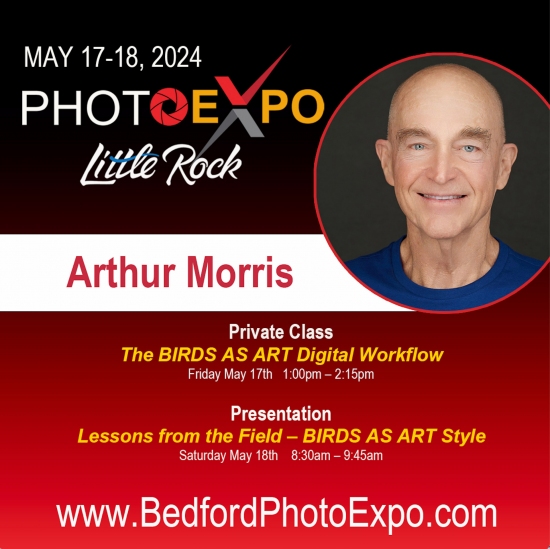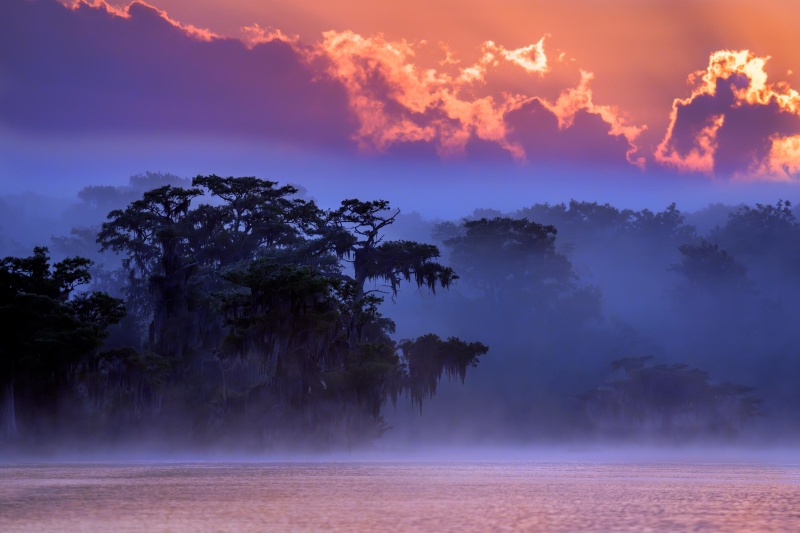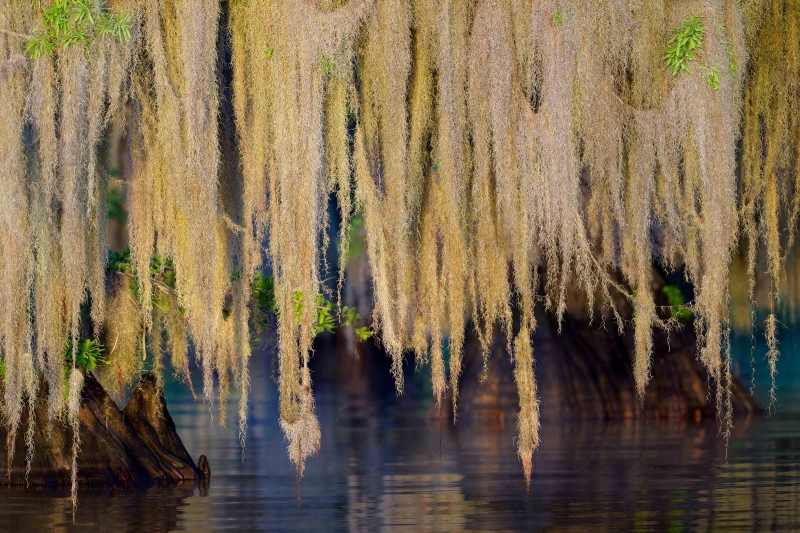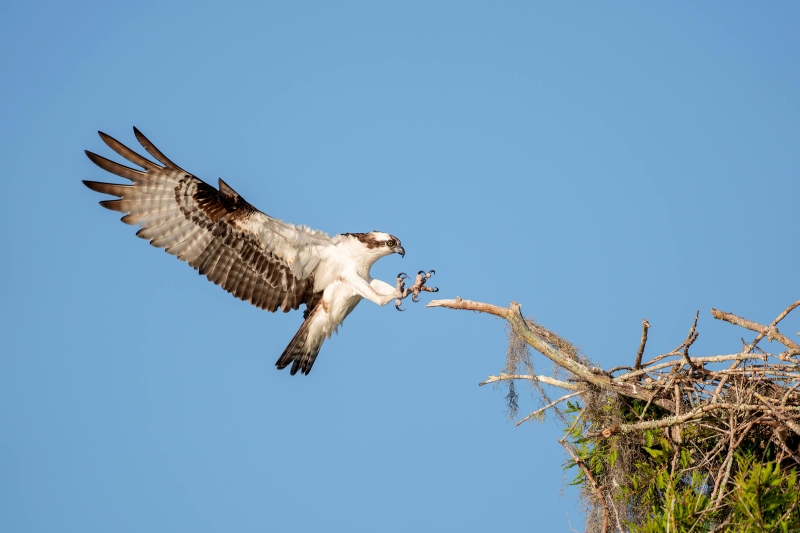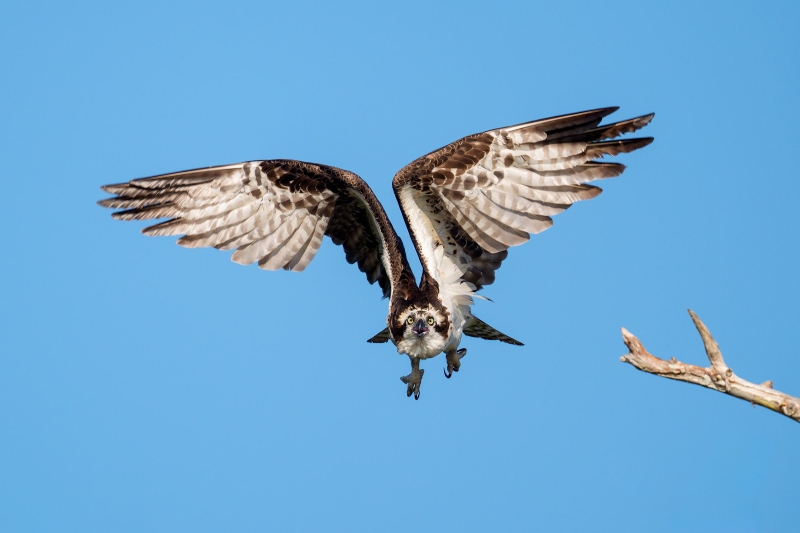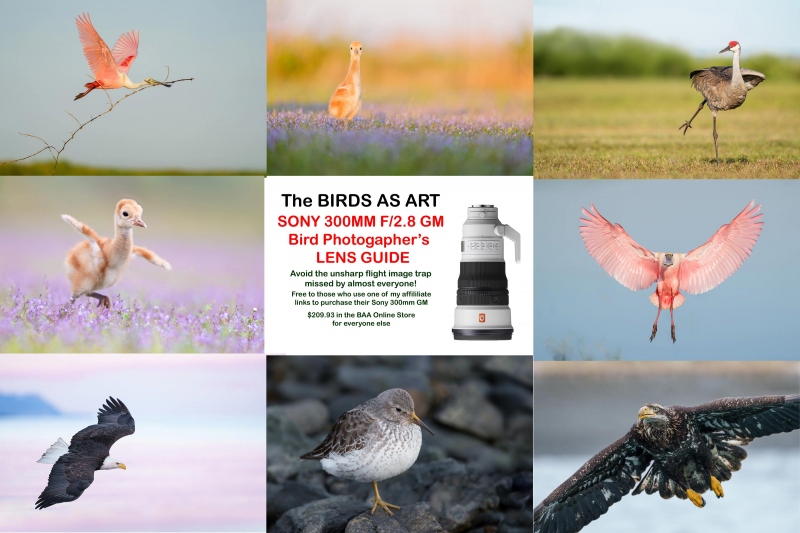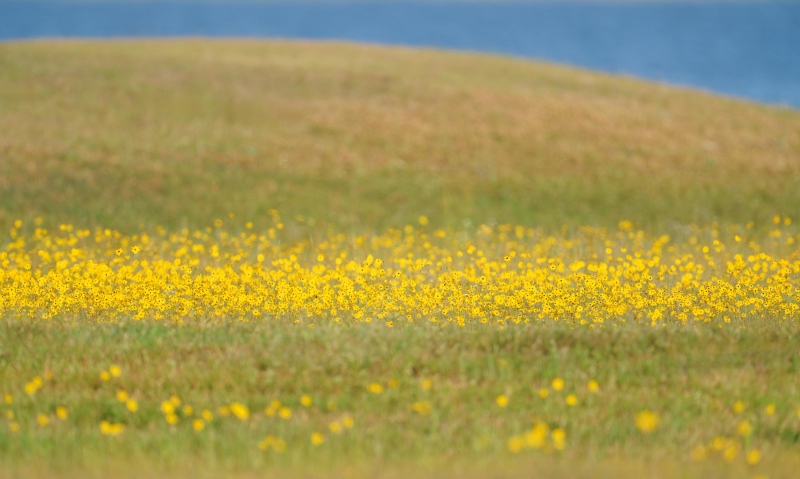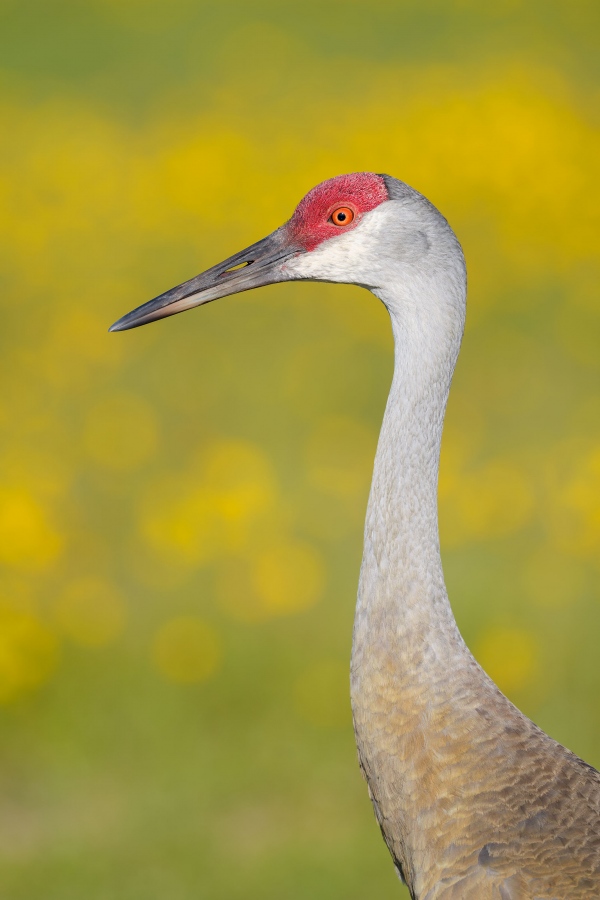Apologize for What?
In the To Improve Your Bird (and Nature) Photography By Leaps and Bounds, Be Sure to Bookmark and Study this Page blog post here, I wrote:
I told him right off that the good news is that he is making sharp images and that he had captured some interesting behaviors. But. And there were lots of buts. He made just about every possible beginner mistake, and as you might imagine, most of the images were horrific at best.
We talked about sun angle, getting lower and choice of perspective, seeing the shot, head angle, subject to imaging sensor orientation, and most importantly for him, the fact that the backgrounds in bird photography are often more important than the subject. At times it was difficult for him to grasp what I was talking about, but we stuck with it, and the result was many “Aha-s.
I had him send me two raw files and was not completely surprised to see that they were both huge crops. So, he also needs help on getting closer to his subjects.
After 40 minutes on the phone, he sent me these comments via e-mail:
Thanks for the critique! Lots to learn, for sure. I went out this afternoon to practice paying attention to the backgrounds. It was fun and I’m getting the hang of it. It was too cloudy to practice sun angle. Next time.
Check the comments there; nobody had word one to say about what I said or wrote. Not one word.
In the next blog post, Believe It Or Not, here, I published the e-mail sent to me by the gentleman from Vermont. Most of the many folks who commented stated clearly that I was wrong, that I insulted him and that I should apologize. Like Kevin Hice and Bob Eastman, I just didn’t get it. Should I apologize for being honest? If you paid for a critique, would you like me to be honest with you?
It seems obvious to me that folks were reacting to what the gentleman from Vermont had to say rather than anything that I had said or done … Yet most folks opted to trash me 🙂 You gotta love that.
I did not call the guy any names. I did not insult him. As he requested, I never mentioned his name. Everything that I said in the two posts was 100% true. When we spoke on the phone, I used the word horrific to describe his images as he needed to be shocked. He thought that his photos were pretty good.
When I first read his e-mail, I immediately thought of the Jack Nicholson line from A Few Good Men: You can’t handle the truth!
If you would like to learn how I really feel about this matter, check out my responses to most every comment in the Believe It Or Not blog post here.
Supporting My Efforts Here
If you enjoy and learn from the blog, please consider using one of my affiliate links when purchasing new gear. It will never cost you a single penny. To support my effort here, please order from B&H by beginning your search here. Or, click here, to order from Bedfords and enter the discount code BIRDSASART at checkout to receive 3% cash back to your credit card and enjoy free Second-Day Air Fed-Ex shipping. It is always best to write for advice via e-mail.
In many cases, I can help you save some serious dollars.
Live Life to the Fullest
Join an Instructional Photo-Tour. Better yet, sign up for both Homer trips.
Your Call?
Which of today’s four featured images impresses you most? Why? Which of today’s four featured images impresses you the least? Why?
What’s Up?
Clemens Van der Werf and I rented a pontoon boat with a guide on Thursday morning at Lake Blue Cypress. Despite a W/NW breeze that had all the birds flying away from us, we did pretty darned well. If you would like to attend an Osprey/landscape workshop next spring, please LMK via e-mail.
Photography at ILE has continued to be excellent most every morning. I have been striving for different with several Sandhill Crane pairs and families.
Today is 4 May 2024. I will be headed down to the lake early. Whatever you choose to do, I hope that you have fun and get a chance to do some photography.
If you plan on purchasing a Sony a9 III Mirrorless Camera (or anything else for that matter), please remember to use or write for either my Bedfords discount code or my B&H affiliate link. Folks who use one of my two affiliate links to purchase the a9 III will receive my .DAT settings (the complete camera set-up) along with a Buttons and Dials Guide.
Please remember to use the B&H links that are found on most blog pages and to use the BIRDSASART discount code at checkout when purchasing your new gear from Bedfords to get 3% back on your credit card and enjoy free second-day air FedEx. Please, also, consider joining a BAA IPT. You will be amazed at how much you will learn!
If an item — a Delkin flash card, or a tripod head — for example, that is available from B&H and/or Bedfords, is also available in the BAA Online Store, it would be great, and greatly appreciated, if you would opt to purchase from us. We will match any price. Please remember also to use my B&H affiliate links or to earn 3% cash back at Bedfords by using the BIRDSASART discount code at checkout for your major gear purchases. Doing either often earns you free guides and/or discounts. And always earns my great appreciation.
|
|
Join me in Little Rock, Arkansas this May for a great weekend of learning and fun. You can check out any and all of the latest/greatest photo gear. If you know any good nearby spots for bird photography, and/or if you would like a free (5-image) portfolio review, shoot me an e-mail. |
Little Rock Photo EXPO
A Bedford Event: Inspire, Learn, Discover
HUGE TWO DAY INTERACTIVE TRADE-SHOW
May 17-18, 2024
State House Convention Center
101 E. Markham St., Little Rock, Arkansas
Don’t miss the Photo Expo in Little Rock! Regardless of your experience level, join hundreds of photographers, as we take over Little Rock on May 17-18, 2024. The Little Rock Photo Expo offers a remarkable experience packed with presentations, hands-on demonstrations, and a massive trade show featuring all the major photographic companies. Explore the latest gear, trade in your old camera equipment, and gain valuable insights from our experts. Get up close and personal with world-renowned keynote speakers and seize countless unique photo opportunities. Bring your camera and get ready for a weekend of fun, learning, and inspiration to elevate YOUR photography to new heights.
Click here to learn more and follow the links to see the schedule of events and/or register. Use this discount code at checkout to save $20.00: VIPEXPO24.
Save 15%!
If you’d like to try out a new lens or if you need a lens for a specific trip or project (or for an IPT), LensRentals.com is the only way to go. To save 15%, simply click on the logo link above, arrange for your rental, and type in BIRDSASART15. If you type the gear you are looking for in the search box, it will pop right up. LensRentals.com offers affordable insurance. You can decline it, opt for LensCap: Damage Only, or select LensCap: Damage & Theft. Then hit PROCEED TO CHECKOUT. After you enter all of your info but before completing your order, be sure to scroll down to Promo Code box and enter the BIRDSASART15 code to save 15%.
I checked on renting a Sony FE 70-200mm f/2.8 GM OSS II lens for a week. The cost is only $122.00. LensCap: Damage Only coverage can be added for a very low $18.00. Going with LensCap: Damage & Theft would be $27.00. The shipping charge varies. They offer an interesting program called Lensrentals HD. By signing up for this shipping discount program ($99.00/year), you’ll get free Standard Shipping on all the orders you place.
Renting a Sony 600mm f/4 GM OSS lens for a week will cost you $536.00. The two coverage options come in at $76.00 or $114.00. Less your 15% discount when you enter the BIRDSASART15 code into the Promo Code box at checkout and enter the BIRDSASART15 code in the Promo Code box at checkout to save 15%.
Remember, to save the 15% on your rental you must start your search by clicking on the logo above, or on this link: LensRentals.com


B&H
To ensure that I get credit for your B&H purchases, you can always click here. The tracking is invisible but greatly appreciated. And, you can use your PayBoo card. You must use the website to order. B&H will reopen on Fri April 14. Thanking me for the past 4000 educational blog posts could not be any easier and will not cost you one penny. Please shoot me your B&H receipt for major purchases.
Many folks have written recently stating that they purchased a Sony a1 from B&H and would like their free membership in the Sony 1 Info and Updates Group, a $150.00 value. When I check my affiliate account, their orders have not been there. When I let them know that they get credit for B&H purchases only if they use one of the many B&H affiliate links on the blog or begin their searches with this link, they are always disappointed. If in doubt, please contact me via e-mail and request a BH link. I am always glad to help and to guide you to the right gear.
Bedfords Simplified
Click here to start your search. Choose standard shipping, and when you get to the payment page, enter BIRDSASART in the discount code box and hit apply. You will be upgraded to free second day air Fed-Ex and receive 3% cash back on your credit card once your stuff ships. Either is greatly appreciated by yours truly.
Bedfords Amazing BAA Discount Policy
Folks who have fallen in love with Bedfords can now use the BIRDSASART coupon code at checkout to enjoy a post-purchase, 3% off-statement credit (excluding taxes and shipping charges) on orders paid with a credit card. The 3% credit will be refunded to the card you used for your purchase. Be sure, also, to check the box for free shipping to enjoy free Second Day Air Fed-Ex. This offer does not apply to purchases of Classes, Gift Cards, prior purchases.
Visit the Bedfords website here, shoot Steve Elkins an e-mail, or text him on his cell phone at (479) 381-2592.
Gear Questions and Advice
Too many folks attending BAA IPTs and dozens of photographers whom I see in the field and on BPN, are — out of ignorance — using the wrong gear, especially when it comes to tripods and more especially, tripod heads. And the same is true in spades when ordering new camera bodies or lenses. My advice will often stave you some serious money and may help you avoid making a seriously bad choice. Please know that I am always glad to answer your gear questions via e-mail. If you are desperate, you can try me on my cell at 863-221-2372. Please leave a message and shoot me a text if I do not pick up.
|
|
|
This image was created on 2 May 2024 on a rented pontoon boat at Lake Blue Cypress. I used the handheld Sony FE 200-600mm f/5.6-6.3 G OSS Lens (at 553mm) and the ridiculously amazing Sony a9 III Mirrorless Camera. The exposure was determined via Zebra technology with Exposure Compensation on the Thumb Dial. Multi Metering -1/3 stop. AUTO ISO set ISO 2000: 1/2000 sec. at f/6.3 (wide open) in Shutter Priority mode. When evaluated in RawDigger, the raw file brightness was determined to be dead solid perfect. AWB at 6:46:49am right after sunrise. Tracking Zone/AF-C performed to perfection. Be sure to click on the image to enjoy the high-res version. Image #1: Cypress Trees on a foggy morning at sunrise |
Shutter Priority Mode with AUTO ISO When You Have No Clue
In predawn light I often go to Shutter Priority (S) mode with AUTO ISO. I assign Exposure Compensation (EC) to the Thumb Dial. I can go with slow shutter speeds with lots of +EC or with faster shutter speeds for sunrise landscapes. For Image #1 I need -.03 EC to avoid toasting the rim lit clouds. Though it helps to understand exposure theory, it is easier with Sony Zebras; just pick your shutter speed and them adjust the EC until you see only a very few Zebras and you are good to go.
There were a zillion ways to go with the color and processing on this one. WDYT?
|
|
|
This image was also created on 2 May 2024 on a rented pontoon boat at Lake Blue Cypress. I used the handheld Sony FE 300mm f/2.8 GM OSS Lens (Sony E) with the Sony FE 1.4x Teleconverter (at 420mm) and the ridiculously amazing Sony a9 III Mirrorless Camera. The exposure was determined via Zebra technology with ISO on the Thumb Dial. ISO 2000: 1/1250 sec. at f/4 (wide open) in Manual mode. When evaluated in RawDigger, the raw file brightness was determined to be perfect. AWB at 6:59:48am on a clear, sunny morning. Tracking: Expand Spot/AF-C with Bird Face/Eye detection enabled performed well. Be sure to click on the image to enjoy a high-res version. Image #2: Spanish Moss hanging from Bald Cypress tree |
Early Morning Light
Once the sun broke through the fog, I went with the 300mm f/2.8, the 1.4X, and the a9 iii for Ospreys in flight. The moss-draped cypress trees are exquisite in early morning light. As we motored very slowly by, I saw Image #2 in my mind’s eye, adjusted the exposure, and fired off a few frames. I love the golden tones of the moss and the colors in the water as well.
|
|
|
This image was also created on 2 May 2024 on a rented pontoon boat at Lake Blue Cypress. For this (and the next) image, I used the handheld Sony FE 300mm f/2.8 GM OSS Lens (Sony E) with the Sony FE 2x Teleconverter (at 600mm) and the ridiculously amazing Sony a9 III Mirrorless Camera. The exposure was determined via Zebra technology with ISO on the Thumb Dial. ISO 800: 1/4000 sec. at f/5.6 (wide open) in Manual mode. When evaluated in RawDigger, the raw file brightness was determined to be dead solid perfect. AWB at 8:11:25am on a clear sunny morning. Tracking Zone/AF-C with Bird Face/Eye detection enabled performed to perfection. Be sure to click on the image to enjoy the high-res version. Image #3: Osprey landing with talons extended |
Oh Well
The wind had been from the south for six days at nearby ILE. The forecast for Thursday morning predicted east winds on Lake Blue Cypress. Though there was not much wind early, it was from the west. Spring 2024 has been a very poor year for the Ospreys breeding at Lake Walk-in-Water near my home. And it has been a relatively poor year at Lake Blue Cypress as well. There are far fewer pairs, many empty nests, and very few pairs with chicks. That said, it is a wondrous place to visit on still mornings. After 8:00 with the sweet light one, the wind slowly swung around to the east, we had a few chances on landing Ospreys. The was still a touch of west in the wind when I created Image #3. That is why the bird’s head is angled very so slightly away. In the original, the front of the bird’s face was not perfectly lit. During the optimization, I lightened the dark feathers at the front of the face using Tim Grey Dodge and Burn. The made the somewhat poor head angle less problematic.
|
|
|
This image was also created on 2 May 2024 on a rented pontoon boat at Lake Blue Cypress. Again, I used the handheld Sony FE 300mm f/2.8 GM OSS Lens (Sony E) with the Sony FE 2x Teleconverter (at 600mm) and the ridiculously amazing Sony a9 III Mirrorless Camera. The exposure was determined via Zebra technology with ISO on the Thumb Dial. ISO 1250: 1/4000 sec. at f/5.6 (wide open) in Manual mode. When evaluated in RawDigger, the raw file brightness was determined to be perfect. AWB at 8:37:44am on a clear sunny morning. Tracking Zone/AF-C with Bird Face/Eye detection enabled performed to perfection. Be sure to click on the image to enjoy the high-res version. Image #4: Osprey screaming while taking flight |
The Hand-holdable Sony 600mm f/5.6 GM Lens
Adding the 2X TC to the 300mm f/2.8 lens with an a9 iii in the driver’s seat makes handheld 600mm bird photography a reality for almost everyone. With the foot removed, the rig weighs five pounds, 10.6 ounces with a battery and a flash card. For most folks, it is relatively easy to handhold this combo it all day long for bird photography. Please note that about 40% of the original pixels in Image #4 were cropped away.
As I continue to age, this combo might add five years or more to my photography career. And yours too.
|
|
|
For those who did not use my link to purchase their Sony 300mm f/2.8 GM lens, you can order your a copy here for $209.93. Click on the image to enlarge and to be able to read the fine print. |
The BAA Sony 300mm f/2.8 Lens Guide
Impressed by my Sony FE 300mm f/2.8 GM OSS Lens (Sony E) images from the last three posts? Use either my Bedfords or B&H affiliate link to purchase your Sony 300mm f/2.8 GM lens and shoot me your receipt via e-mail and request a copy of the first-ever BAA Lens Guide. I thought that it would take only minutes to create this guide, but I was dead wrong. In the process of creating it, I learned a ton about the lens. And even better, I discovered a simple yet potentially fatal flaw that was resulting in sporadically unsharp flight images. The set-up fix is simple. Just be sure to use one of my affiliate links and get the guide for free.
If not, you can purchase a copy here for $209.93. Yes, it never hurts to use my links and it never costs you one penny more. And if you contact me via e-mail before you make a major purchase, I can often save you some money.
Typos
With all blog posts, feel free to e-mail or to leave a comment regarding any typos or errors.

